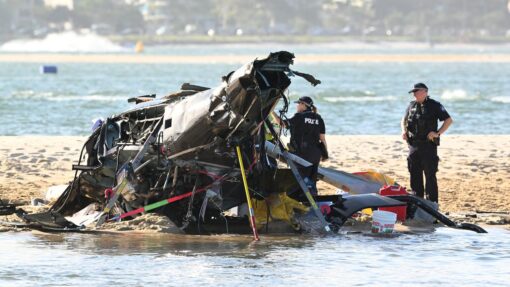Hi-tech rehab for injured birds of prey
Tracey Ferrier |

In the Top Gun world of birds, the need for speed is everything.
It’s what separates life and death for Australia’s apex aerial predators that must fly at breakneck speed, and with pinpoint accuracy, to catch their next meal.
So aiding the return of flying skills for injured birds of prey is a crucial task for carers.
That job just became a whole lot easier thanks to a flight testing facility at Taronga Western Plains Zoo in NSW.
The spacious, enclosed tunnel is part of a new high-tech hospital that’s just opened to treat the zoo’s residents, but also hundreds of native animals each year.
All too often they include protected birds of prey such as owls, wedge-tailed eagles and the world’s fastest bird, the peregrine falcon, which can dive at speeds of 300km/h.
The zoo’s senior vet Alisa Wallace said they typically present with broken wings from car strikes and injuries from being trapped in barbed wire fences.
But sometimes they’ve been shot, presumably for picking off lambs or menacing flocks of chickens.
Nursing raptors back to health is not an easy thing and involves a number of stages, often at different facilities, Dr Wallace says.
The flight testing tunnel at the Dubbo zoo will play a key role in early-stage rehabilitation, after birds have undergone surgery.
Some will regain enough condition to be released, others will need more time at specialist raptor rehab centres.
The new $14.6 million hospital, funded by the state government and donations, will also be a lifeline for other native species suffering the effects of human activity.
It’s set up to take koalas hit by cars and attacked by wild dogs, and turtles that are frequently turned in with shattered shells, also from car strikes. When mothers don’t make it, their eggs are carefully taken by caesarean and then incubated for release.
Currently the hospital is taking care of four clutches of turtle eggs. It’s also nursing a very special baby, an echidna puggle saved as its burrow flooded during the recent floods.
The hospital is perfectly set up to deal with the puggle’s special needs, including a very low tolerance for temperature fluctuations.
“All the wards can be repurposed with different types of housing depending on what we need, whether that’s reptiles that need particular heat regimes, or an echidna puggle that needs to be kept at 22 degrees,” Dr Wallace said.
She says the hospital, a replacement for the Dubbo zoo’s original one built in the 1970s, will go some way towards dealing with the relentless stream of sick and injured animals in need of care.
Notably it’s the only wildlife hospital west of the Blue Mountains and takes animals from a vast area.
“Australia is looking down the barrel of an extinction crisis and considering how rapidly that’s happened, I guess it’s fairly embarrassing on us Australians,” she said.
“We’re moving in the right direction, we’re investing in infrastructure, and I think there’s increasing awareness about it, but we’ve still got an awfully long way to go.
“We need to stop the extinctions completely. The only way we’re really going to do that is to change our national thinking about how we use land, and how we interact with our environment.”
AAP


